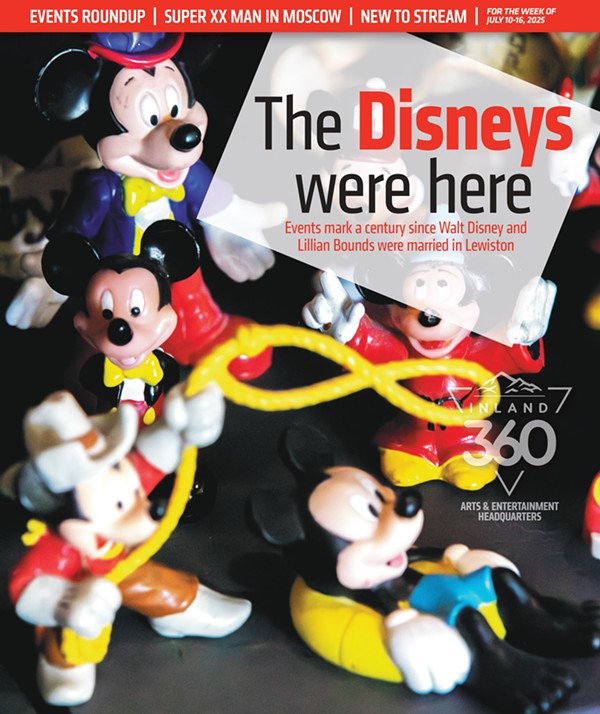Will nobody but Julian Fellowes think of history’s obscenely rich and their wants and needs?
With his new HBO series “The Gilded Age,” set in 1882 New York, the creator of “Downton Abbey” is bravely leading the mildewed charge back to days gone by, when robber barons papered over their exploitations with an elegant, high society-minded facade and everyone else knew their place. Truly, what would fair-minded people do without Fellowes here to remind us that the whims of the wealthy should be portrayed as prettily and sympathetically as possible — why do pedestals exist if not to elevate the elites? — and that depictions of the past are best romanticized, lest anyone to think too long or too hard about the sweat, grime and suffering that made these rarefied lives possible.
An exquisitely empty story of Old New York, “The Gilded Age” wanders aimlessly through Edith Wharton territory, minus the self-awareness, the wit or even halfway decent writing. Status is all, no matter how pointless. Imagine a show that actually considered more deeply the implications of these social stratifications (and who they benefit and who they trap) or even had some self-mocking fun with it all, rather than taking it at face value.
Instead we’re treated to a story of old money (the knickerbockers with their Dutch ancestry) vs. new money (the arrivistes, provenance unknown). It’s a battle waged over faux pas, slights and pursed lips — and, oh yes, some grubby backroom corruption as well — and I suppose we’re meant to favor one of these factions over the other, but they’re all terrible. That quality is modulated to some extent because there are some terrific actors in the cast who find nuance where none exists on the page. But even if all you’re looking for is frothy escapism and sumptuous pleasures for the eye (and I think that’s the best you can hope for in these circumstances), I’m not sure “The Gilded Age” — a story of dueling Mrs. who live across the street from one another — will fully satisfy.
Here are the players:
Team Old is represented by the stiff-backed widow Mrs. van Rhijn and her long unmarried and slightly less rigid sister, played by Christine Baranski and Cynthia Nixon respectively. Their niece Marion (Louisa Jacobson) has been left destitute and comes to live with them and, if Mrs. van Rhijn has her way, will soon find a suitable marriage.
Marion is less concerned with this, or really any of the rules of New York society, because she is a Woman With Her Own Mind. She’s lovely and also remarkably dull (not unlike “Bridgerton’s” Season 1 main character, Daphne) and she befriends a young Black woman named Peggy (Denée Benton), who is bucking her own family’s expectations as well with ambitions to be a published writer; in the meantime she becomes Mrs. van Rhijn’s personal secretary. If only the show conceived of Peggy as more than a tokenized presence and gave some consideration to her thoughts about navigating these white spaces she travels through.
Then there’s Mrs. van Rhijn’s boredly dashing son (Blake Ritson), who is on the hunt for an heiress, much to the displeasure of his boyfriend, who seems surprised that a gay man descended from old stock would plan to marry a woman despite preferring men. There is also an assemblage of other hoity-toities, including a brief appearance by Mrs. Astor herself, the real-life queen bee of New York society, played here by Donna Murphy. (Nathan Lane later shows up as Ward McAllister, another real life figure and Mrs. Astor’s lieutenant of sorts.)
Team New consists of the Russells, a railroad tycoon and his social climbing wife played by Morgan Spector and Carrie Coon. The couple has just moved into a brand new mansion “big enough to be splendid without being oppressive” that sits majestically across the road from the van Rhijn brownstone on Central Park at 61st Street and 5th Avenue. (The van Rhijn house is located where the Pierre hotel stands today.) The Russells also have two children who will seemingly be love interests to various parties.
Additionally, there’s an entire servant class (including an underused Michael Cerveris) and as a whole they appear perfectly happy to work in service, as the phrase goes, minus anything so gauche as resentment or exhaustion. Yes, it’s a better quality of life than one afforded by dangerous factory work, but the show suggests that simply being in proximity to all this incredible wealth and opulence is wonderful enough. Which is why, when Marion comes to live with her aunts, there’s nary an eye rolled from the servants about yet more work being piled on their plate. What are we meant to infer from the detail that the servants are racist but a snob extraordinaire like Mrs. van Rhijn is not?
Aside from “Downton Abbey,” Fellowes is best known for 2001′s “Gosford Park,” which had a more critical eye for these various dynamics and perhaps that was due to the influence of director Robert Altman and co-star Bob Balaban, who came up with the idea on which the film is based. Here Fellowes is collaborating with Sonja Warfield (whose credits include “Will & Grace”) but as with “Downton,” the stakes consistently feel too limp.
Hellbent on breaking into the Four Hundred, the so-called list of New York’s creme de la creme and the cliquiest of cliques, Mrs. Russell’s obsession goes unexamined. “I don’t want to come a long way, I want to go all the way,” she says, and really, why? “So her daughter will have a better life,” is one explanation the show offers, and yet the Russells have done pretty well for themselves as outsiders. Somehow Coon makes social climbing not seem terribly sad and she’s given some gorgeous costumery and extraordinary bustles that literally bustle as she walks because, I suppose, she’s a woman on a mission!
Even so, the character’s methods are all over the place and she’s not particularly interesting as a person, Coon’s enormous talents notwithstanding. Is this a rags-to-riches story? Unclear. But the thing about rags-to-riches is that it’s the not exactly a moral victory if one’s elevation relies on maintaining the very circumstances that leave people in rags in the first place. When her husband uses his money to embarrass the society women and their charitable efforts, she’s cooly informed that this sort of stunt does not easily impress the people she needs to win over.
To which she smugly replies: “This sort of stunt impresses everyone.” I mean, I guess? But even the snobbery here isn’t especially zingy and there’s little depth to this Game of Scones either way.
Ultimately the writing is just so … lacking. When the Russells receive news of a train crash, Mr. Russell warns his wife this could potentially “destroy the company and us,” to which she offers the firm if obvious rejoinder: “Then make sure you survive it.” All you can do is feel for the actors who had to inject life into these banal sentiments.
That said, I do like some of the show’s visual motifs. The van Rhijn mansion is full of browns and burgundies and steeped in dark, musty Victorian interiors, whereas the Russell abode anticipates the lighter, brighter, airier aesthetics of the Edwardian era, full of creams and sky blues. And it’s wild to consider just the massive size of these single-family homes sitting in the middle of Manhattan.
There is also perhaps something meta in the fact that Louisa Jacobson and Taissa Farmiga (the latter playing the Russell’s restless daughter) are the offspring of Hollywood insiders Meryl Streep and Vera Farmiga, as if to underscore the show’s subtext about the power of having the right connections.
Designed to encourage you to sit back and enviously sigh through a guided tour of these exclusive spaces from the past, “The Gilded Age” may pretend that hierarchies led to a more orderly and refined life. The truth is always more complicated. But then, so is good fiction.
———
'THE GILDED AGE'
2 stars (out of 4)
Where to watch: 9 p.m. ET Mondays on HBO
———
©2022 Chicago Tribune. Visit chicagotribune.com. Distributed by Tribune Content Agency, LLC.

















